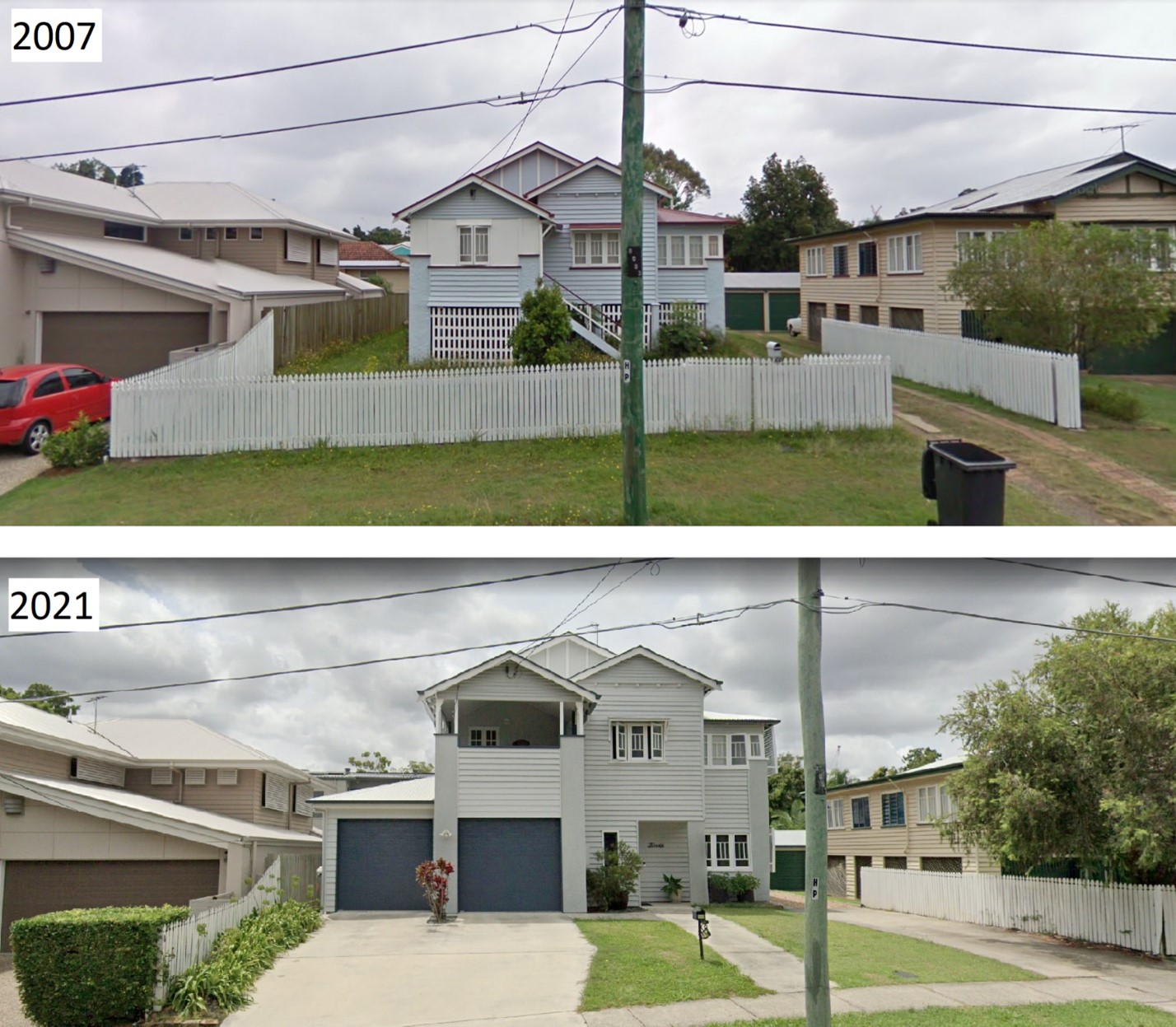Character contradiction: The exclusionary nature of preservationist planning restrictions
- Created
- 9 Oct 2023, 12:34 p.m.
- Author
- Rachel Gallagher, Thomas Jason Sigler and Yan Liu

Brisbane, Australia, is a subtropical city at the center of one of Australia’s fastest growing regions. It is the fastest growing major city in Australia. With this growth comes significant challenges. New housing supply has generally been provided through the construction of new detached housing on the urban fringe. A regional planning framework was implemented by the state government in 2005, and it now requires over 90% of new dwellings in Brisbane to be constructed within the city’s existing urban area.
In addition to this, Brisbane was once referred to as the ‘demolition capital of Australia’, with many historic public buildings demolished for redevelopment in the 1970s and 1980s. As a result, much of the city’s built heritage exists in its private housing stock.
Colloquially referred to as ‘Queenslanders’, Brisbane has a vernacular architecture of raised houses constructed with tin roofs and timber cladding. While these were once considered ‘slum-like’ and demolished, from the early 1990s Brisbane City Council introduced mechanisms to protect this character housing from removal.
Today, Brisbane protects any house constructed prior to 1946 from demolition. In some areas, new dwellings are allowed, provided the character house is retained and new homes are of a similar scale. This hopes to encourage walk-up apartments and townhouses behind and beside character houses. This research aimed to understand whether protection against demolition of character houses results in built heritage preservation, and whether redevelopment can both conserve historic housing and increase residential density.
To understand the implications of this policy, we tracked the fates of almost 6000 houses from 1951 to 2021. We found that character protections suppress multi-family housing construction, even where increased density is encouraged by the planning scheme.
We contend that character protections are tantamount to exclusionary zoning. This is particularly evident due to the level of modification allowed to character houses, which can be renovated but cannot be demolished. Results show that even areas targeted for densification through infill development, character house retention requirements, combined with minimum lot sizes, preclude housing diversity. Protections are also not necessary to protect built heritage as many landholders opt to retain historic houses despite zoning that allows redevelopment at higher density.
Read the full paper on Urban Studies OnlineFirst here.


Comments
You need to be logged in to make a comment. Please Login or Register
There are no comments on this resource.